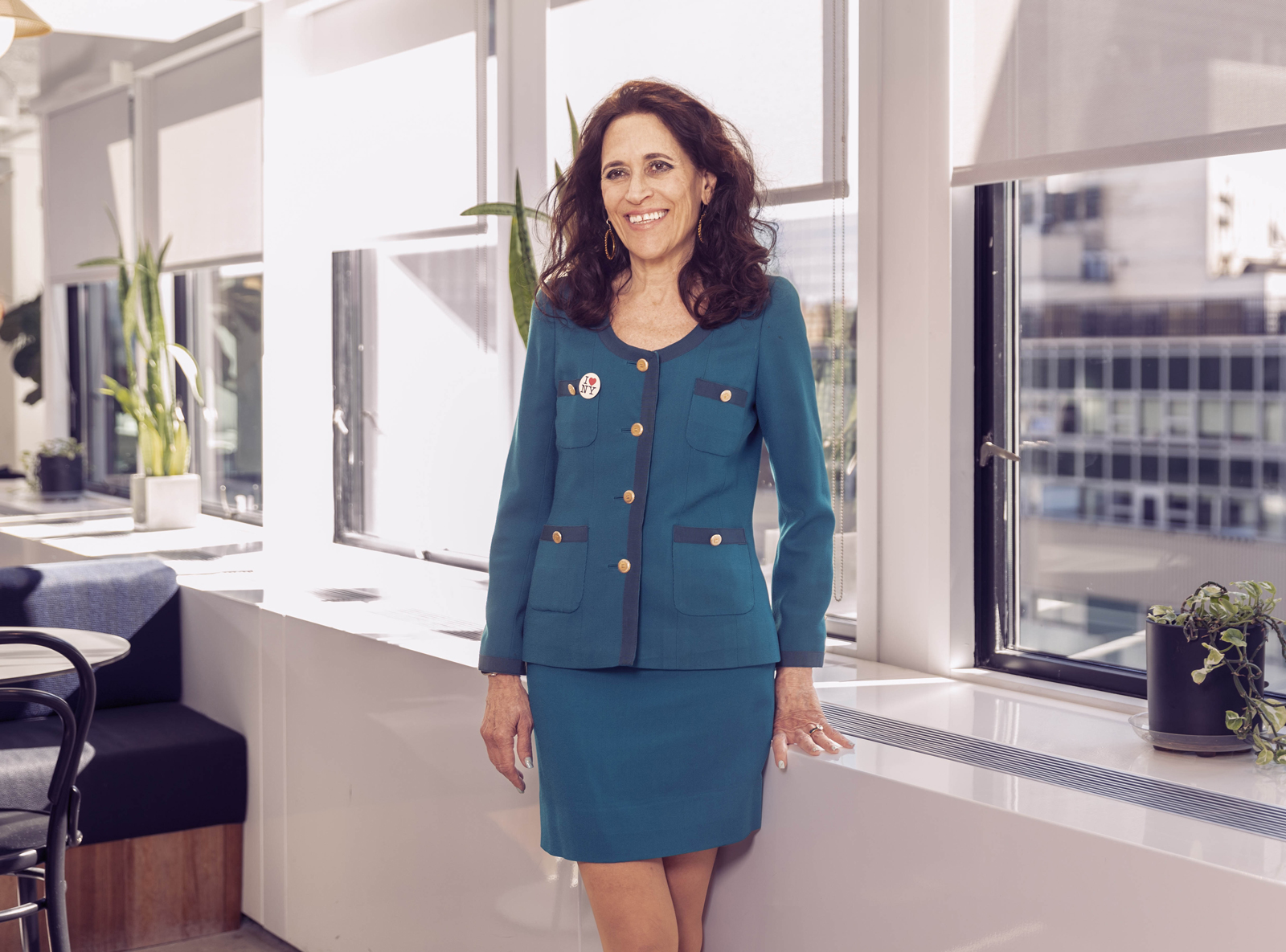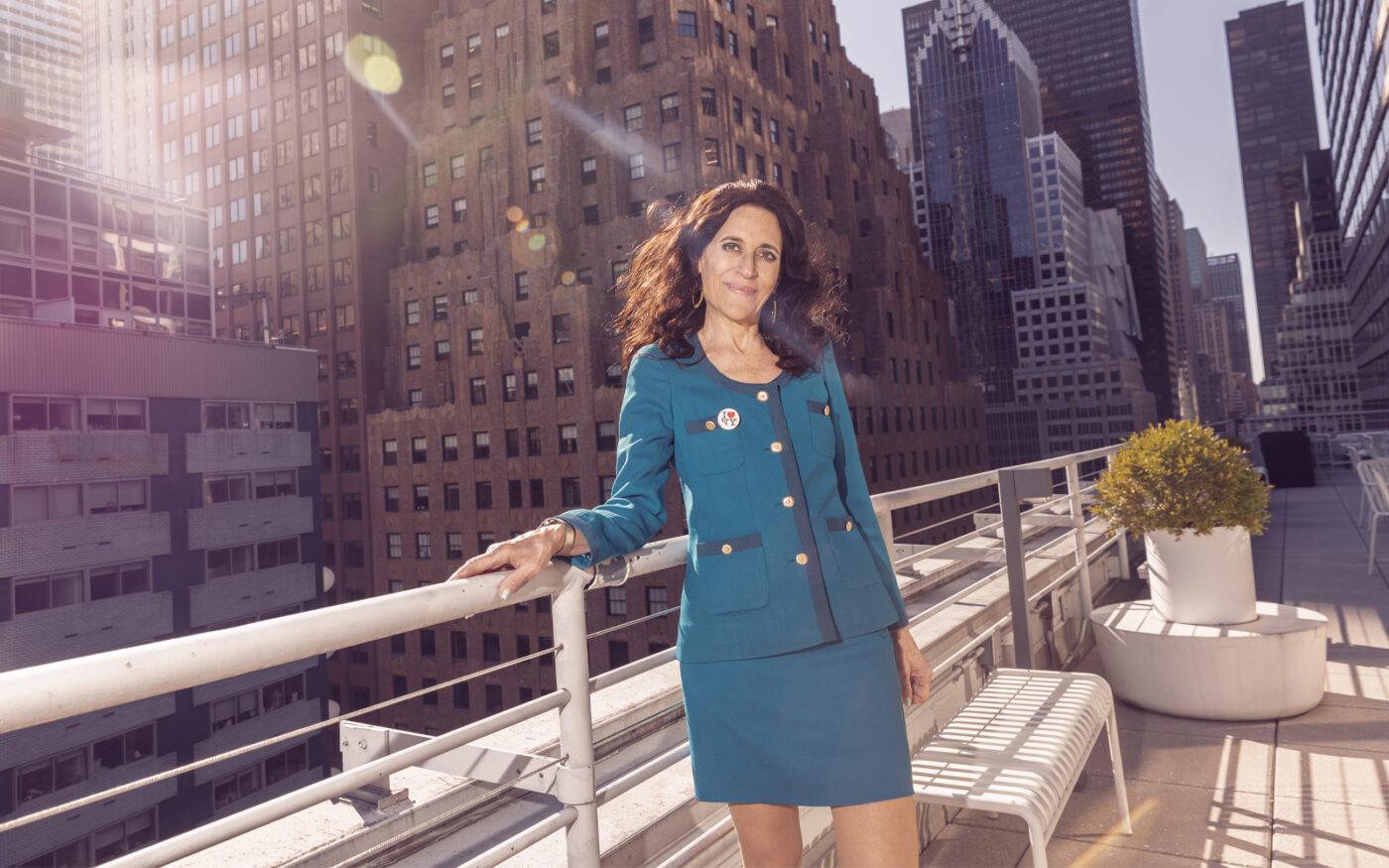Ruth Colp-Haber’s yellow cab raced up Madison Avenue. The rain was pounding as the New York City office broker, on her way to meet a client, lamented the three calls she’d gotten that week from contacts looking to shed space and move to Florida.
“It’s depressing,” she said.
Normally, a flood of business would be welcome news for Colp-Haber, who specializes in office subleases at Wharton Properties, the firm she founded. But finding tenants to fill all the sublease space the post-Covid office market has yielded can wear on even the Queen of the Sublets, as she is known.
“The problem is the demand side,” Colp-Haber said. “The supply of the sublets is totally there.”
Subleasing absorbs the inefficiencies in a sector where standard leases are large, long, expensive and inflexible. It isn’t glamorous, but necessity has improved its stature.
Office sublease space in New York City has ballooned to nearly 21 million square feet, up 76 percent since March 2020, according to Colliers. The glut grew from relocations, corporate budget cuts and, of course, the explosion of remote work.
Sublets have lower rents and shorter terms, which means smaller commissions. Some commercial brokers turn up their noses at the sublet market. One, upon being contacted for this article, said he had never heard of a broker specializing in sublets.
“They’re subtenants! Subtenants are no one to the landlord.”
But when the pandemic hit and no one was calling commercial brokers, Colp-Haber’s phone kept ringing.
“We don’t need this much space” or “We don’t need the space at all,” companies kept telling her.
One challenge for sublet specialists is accommodating companies seeking large spaces. About four of every five subleases are less than 50,000 square feet, according to CBRE. Most of Colp-Haber’s deals are for 10,000 square feet or less. Discounts of 20 to 40 percent are standard, depending on the market, class and remaining lease term, a CBRE report found last year.
It’s scrappy, but it suits Colp-Haber.
“I’m just a bargain hunter by nature,” she said. “I can’t just go into a store and buy something at a regular price.”
Becoming the queen
Colp-Haber got her start in commercial real estate 30 years ago after she was laid off from a job as a mortgage trader on Wall Street and sought career advice from a business adviser.
“He said, ‘You’re a natural for office leasing,’” said Colp-Haber, a Wharton School graduate whose parents were both doctors. “I didn’t know one person in office leasing.”
She did some research and got a job at “one of the big firms that’s no longer around.” It was the middle of a downturn. In two years, she did exactly one deal — for 2,000 square feet.
Colp-Haber, by then in her early 30s, went back to the business adviser. This time, he suggested she start her own company. In her first year as president and CEO of Wharton, she closed 18 deals. Many were sublets.
Colp-Haber realized that sublets could provide hidden value for her clients and began to focus on that niche. “The tenants loved it because they were getting these great deals,” she said.
Office owners, by contrast, hate the sublet glut because it is undercutting them at the worst possible time. It’s even harder to fill their buildings when so many tenants are offering finished space at much lower rents.

“It’s very frustrating for landlords,” Colp-Haber said. “They’ve got the building, but then if there’s a sublet, and a nice sublet, [with] all the furniture and the phones, and it’s half the price, which deal are you going to go with if you’re a tenant?”
Sublets can be easier to negotiate than direct leases because there usually isn’t any construction work, and furniture is often included. Transactions are three-party deals among the tenant, landlord and sublandlord but are otherwise similar to direct leases.
One of Colp-Haber’s early clients was A Wonder Media Company, which has “downsized and then upsized, then downsized again,” said its CEO, Chesley Maddox-Dorsey.
Wonder moved three times with Colp-Haber and now subleases 8,000 square feet at Vornado’s Penn 1, down from a previous 11,000-square-foot deal.
Colp-Haber traces many of her clients back several decades to college, social connections or business school. She met Maddox-Dorsey when their daughters were in kindergarten together. But she finds others the old-fashioned way: by picking up the phone and building a rapport.
“Ruth cold-called me and she sold me on a cold call,” said Mark Rottenberg of the law firm Rottenberg Lipman Rich. “Then we realized I was her husband’s mentor in law school.”
That was 25 years ago. Colp-Haber has since helped Rottenberg negotiate three deals, including a 10,000-square-foot sublease at the Helmsley Building, 230 Park Avenue, when the law firm Dentons vacated the building in 2016. Asking rents in the building are about $85 a square foot.
“She got us a 10-year sublease way below what I’m sure Dentons is still paying,” Rottenberg said.
He has a plan for when the lease comes due in June 2026. “We’ll release Ruth the bulldog,” he said. The firm will probably find space elsewhere and then negotiate to stay in its current space, Rottenberg said.
Colp-Haber is often the only woman at the bargaining table. Her attention to detail and knack for negotiations have earned her respect in a male-dominated industry, she said.
One commercial broker said he had never heard of a broker who specializes in sublets.
“It’s a very macho business with very low barriers to entry but high barriers to success,” Colp-Haber said. “So you get a very big range of talent in the business.”
Colp-Haber has closed more than 500 deals. Her company has three employees, including her husband, Eric Haber, who left his law firm job to join Wharton Properties on Jan. 1, 2020.
“Before coming to work with us, he asked if I was able to foresee any possible disruptive event to what had been a strong and consistent flow of business for several decades,” she said. “My answer was ‘No.’”
City of sublets
That year was already off to a slow start when offices shut down. Only now is business beginning to stabilize. Hedge funds, private equity and technology firms are currently the source of most deals, Colp-Haber said. Bargains are beginning to dry up as direct leases expire and subtenants have to renegotiate. But companies are still moving to Florida.
“Demand still has a way to go before it returns to the pre-2020 level,” said Colliers’ Frank Wallach. “But there is still tenant demand out there.”
It was in 2021, a relatively good year, that Colp-Haber’s experience met the moment.
One of her clients, fintech firm DailyPay, signed the biggest sublease of the era. It wanted to leave its 42,000 square feet at 55 Broad Street, and Colp-Haber brokered a 12-year, 137,000-square-foot deal with S&P Global at 55 Water Street.
“The CEO said he would only do the deal if he could get his name on the building,” Colp-Haber said. “They’re subtenants! Subtenants are no one to the landlord. But I got the landlord to do it.”
